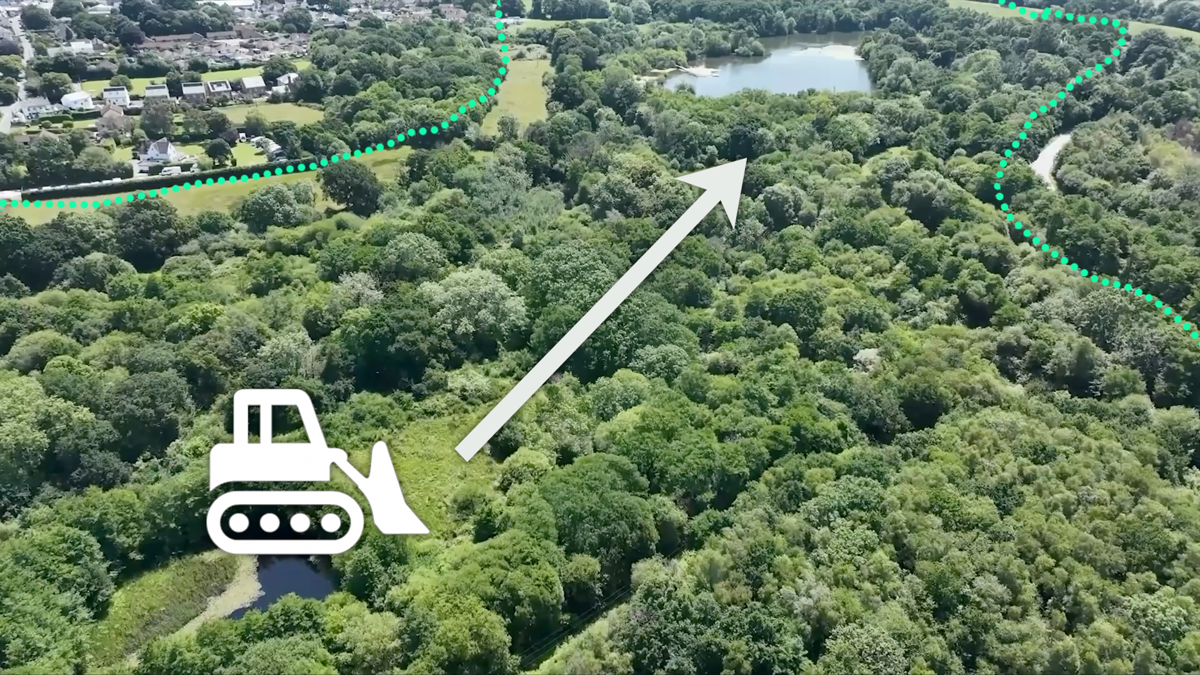
Last Sanctuary for Wildlife
A thriving ecosystem of mammals, birds, fish, and protected species will be lost forever.
The threatened forest is more than trees – it is the last sanctuary for wildlife in Kingsteignton. If it falls to quarry expansion, a thriving ecosystem of mammals, birds, fish, and protected species will be lost forever.
Who Lives Here
-
Buzzards circle above the canopy. "Big Wings" the buzzard is a locally known individual.
-
Red deer move quietly through the forest glades.
-
Badgers, foxes, and owls rely on the cover of dense woodland.
-
Protected species include sand martins nesting in sandy banks, several species of bats commuting along dark flight corridors, and dormice in the hazel understory.
-
Fishing lakes are home to hundreds of carp and other species, supporting kingfishers and waterfowl.
Once this woodland is cleared, their habitats will be fragmented or destroyed. Many of these species are legally protected, meaning the council cannot lawfully approve destruction without robust mitigation.
Why It Matters
-
Bats & dormice are European protected species. Destroying their habitats without proven replacement breaches the Habitats Regulations.
-
Sand martins are protected migratory birds – their nesting banks cannot simply be bulldozed.
-
Otters use the River Teign corridor; disturbance and pollution from pits could drive them away.
-
Connectivity: The woodland forms part of the Bovey Basin’s green infrastructure, linking the River Teign, Stover Park, and Rackerhayes wetlands. Remove it, and those wildlife corridors collapse.
Policy Levers
-
Teignbridge Local Plan (EN8, EN9, EN10, EN11): Requires protection of biodiversity, important habitats, European wildlife sites, and legally protected species.
-
Devon Minerals Plan (Policy M6): Insists on basin-wide habitat connectivity and no adverse effect on the South Hams Special Area of Conservation, critical for Greater Horseshoe bats.
-
Habitats Regulations: Legally binding – if a Habitats Regulations Assessment cannot prove no harm to bat populations, the scheme must be refused.
Campaign Wins Within Reach
-
Protected species evidence: Local records of bats, sand martins, and dormice can force Natural England to intervene.
-
Green Infrastructure obligations: The Minerals Plan requires continuous habitat corridors. We will highlight how this proposal severs them.
-
Legal pressure: Courts have struck down quarry permissions before when councils failed to properly assess wildlife harm.
The Bottom Line
This woodland is the last refuge for red deer, buzzards, badgers, foxes, and countless protected species. Once bulldozed, their habitats are gone forever.
The law is clear: councils must protect legally safeguarded species and habitats. The community must insist those laws are enforced – and that this last sanctuary for wildlife is defended.




